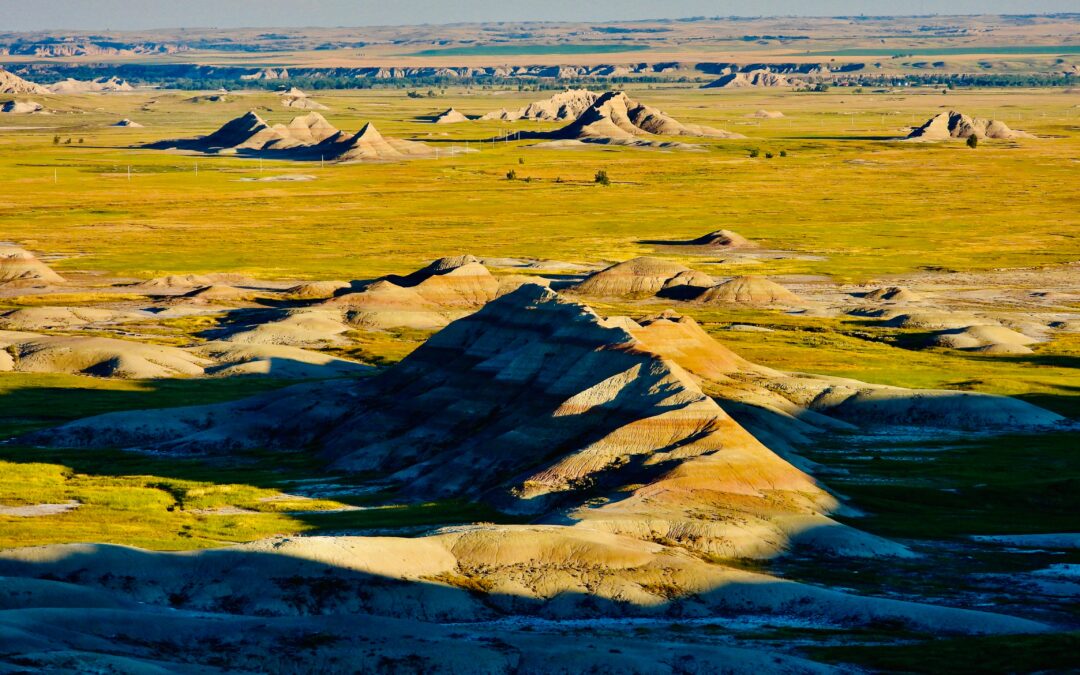Boasting some of the most spectacular wildernesses on the planet, America’s national parks are incredibly diverse. From craggy mountains and pristine lakes to waterfalls and palm-fringed beaches, we explore a selection of the most impressive national parks in the US.
1. Channel Islands National Park, California
During the summertime, this national park attracts nature lovers from near and far, boasting approximately 2,000 species of animals and plants, many of which are found nowhere else on earth. The National Park Service is credited with saving one of its scarcest creatures, the island fox, a relative of the gray fox but around 30 percent smaller. Hikers sometimes spot island foxes chasing each other across the trail now that the species has recovered robust population numbers.
Consisting of five islands out of an eight-island chain, Channel Island National Park lies off the Ventura coast, just north of LA. The islands’ waters, which are also protected, are home to approximately one third of the world’s cetacean species. It is one of the best locations in the world for whale watching, particularly during July through September, when endangered humpback and blue whales migrate to the region.
In addition to its unique wildlife, the Channel Islands are also important to human history, with archaeological evidence to suggest that humans have lived in the region since the last Ice Age. It was here that a 13,000-year-old skeleton was discovered, the oldest found in the whole of North America.
2. Badlands National Park, South Dakota
The summer months are hot in this 64,000-acre preserve, but somehow that heat seems to make this bleak landscape even more dramatic. Here, visitors can marvel at the otherworldly rock formations, hewn over millennia by the twin powers of air and water.
During the summer there is plenty of daylight, so bison are frequently spotted and prairie dogs can be heard calling to each other. However, even while in the car, it is important to stop and give the wildlife the distance they need. Badlands is a great place to watch the sun go down, the landscape awash with vibrant rose and dazzling crimson. The region’s dark skies also make it an ideal place to watch the stars.
3. Grand Teton National Park, Wyoming
The highest peak in the Teton Range, Grand Teton stands almost 14,000 feet high, towering over Jackson Hole basin. The alpine terrain features a dozen small glaciers, various streams and crystalline lakes, and the mighty Snake River. Although Grand Teton sits just 10 miles south of Yellowstone National Park, it draws significantly smaller crowds. The 15-mile-long Jackson Lake offers visitors a welcome reprieve from the sizzling summer temperatures.
Visitors to Grand Teton National Park may encounter elk, moose, pronghorn, bison, wolves, and both black bears and grizzly bears. Again, it is important for visitors to maintain a safe distance when viewing wildlife, staying 100 yards from wolves and bears, and at least 25 yards from other species, whether in an automobile or on foot.
4. Haleakala National Park, Maui, Hawaii
Standing 10,000 feet tall and dating back more than 1 million years, the mighty Haleakala volcano dominates the Maui landscape. Watching sunrise or sunset from its peak is an unforgettable experience, and the viewing is particularly pleasant in summer thanks to the temperate, dry weather. Here, visitors can take in the spectacular 360-degree views, gazing all the way to the ocean on a clear day.
However, visitors should bear in mind that, due to the difference in altitude, the temperature at the top is around 20 degrees cooler than at sea level. While it is possible to hike into Haleakala’s crater, visitors need to keep in mind that the hike back can be very challenging.
Haleakala National Park consists of two parts: the first is the area around the volcano’s peak, and the second is the valley and coastal region in Kipahulu, which incorporates vast expanses of wilderness. For those who enjoy hiking, there are several trails to the top with varying lengths and difficulty levels. At the summit of Haleakala is a visitor center, sharing information on the local flora and fauna.
5. Yosemite National Park, California
Home to thousands of waterfalls, from tiny streams with a plunge of just a few feet, to towering spectacles more than half a mile high, Yosemite National Park is best visited in early summer. Towards the end of the season, its many waterfalls have either slowed to a drip, or totally dried up.
Among Yosemite National Park’s many hiking trails is the Mist Trail, a three or seven-mile hike passing two of Yosemite’s most impressive waterfalls. For those up to the challenge of a full five-hour hike, the signature hike offers some superb views, and is best tackled at daybreak in the early summer.
Yosemite is one of America’s best-known national parks for good reason, with stunning views, intriguing wildlife, and a fascinating history. Here visitors can enjoy a diverse array of outdoor pursuits, from horseback-riding to yoga to skydiving.

